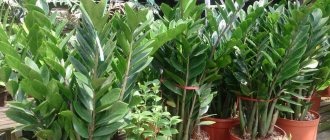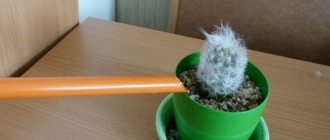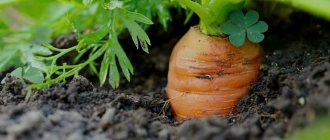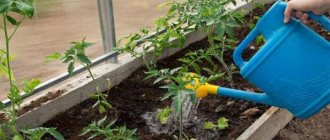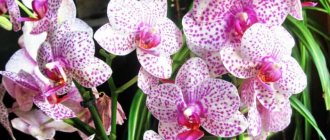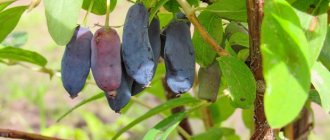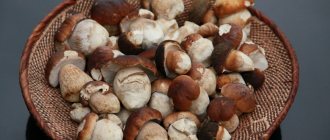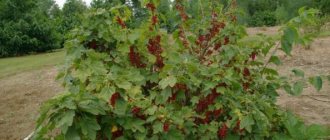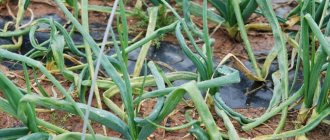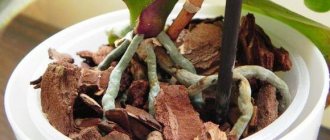Why do you need fertilizing?
Feeding is a necessary measure for caring for hydrangea. Without adding micronutrients at different periods of plant development, it is impossible to achieve lush flowering. Hydrangea feeding is necessary:
- for long and lush flowering;
- for active growth of strong shoots;
- for normal plant development without leaf chlorosis;
- to obtain the desired shade of inflorescences.
Hydrangea paniculata belongs to those types of plants, the appearance of which depends directly on the presence of certain microelements in the soil. If the mineral fertilizer complex is chosen incorrectly, the hydrangea may get sick.
Shelter construction
When constructing a shelter, you need to take into account the variety of hydrangea, the size of the bush and its age. For an adult shrub, you can limit yourself to hilling; snow will play the role of additional insulation here. In young specimens it is still better to cover the shoots. Features of covering measures for each type of plant will be as follows:
- In paniculate hydrangea, the most viable buds are formed in the middle part of the shoots, so freezing of the tops of the branches will not cause much harm to the plant. When building a shelter for it, you need to take into account the weather conditions of the region. It’s not just frost that can play a negative role. In strong and humid winds, the bush can suffer much more severely. In the southern regions and the middle zone for paniculata hydrangea, a sufficiently high hilling with a mixture of dry soil and peat will be sufficient. In Siberia and the Urals, branches are bent into the ground and secured by throwing spruce branches, burlap or agrofibre on top. Large bushes are wrapped in a vertical position with several layers of non-woven covering material.
- For heat-loving large-leaved hydrangea, shelter must be made in advance, without waiting for sub-zero temperatures to arrive. Before covering the plant, the leaves are torn off, leaving them only at the very top to protect the apical buds. After this, the bush is divided in half, bending each part to the ground and installing metal arcs over the branches. Then the hydrangea is mulched with peat or pine needles. The top of the arc needs to be covered with two layers of lutrasil, securing it near the ground. Film should not be used for covering because it does not allow air to pass through. You can release the bush in the spring only after the frosts have disappeared.
- Tree hydrangea is a strong and unpretentious plant that requires minimal recovery time in the spring. With age, the winter hardiness of the crop increases, but for the purpose of prevention it is better to cover it. It is necessary to hill up the roots. The above-ground part is insulated in a vertical position, after tying the shoots to a peg. Spruce branches are laid on top around the plant. In the northern regions, the above-ground part is additionally covered with two or three layers of spunbond or lutrasil. You can secure the material to the plant using a rope. For large and old bushes, a frame shelter is built, filling it inside with dry foliage. In this case, the upper part of the structure will need to be protected from moisture penetration.
Proper shelter will allow the hydrangea to successfully overwinter, remaining strong and healthy. If there is insufficient insulation, the bush will not die, but you won’t have to expect abundant flowering from it. The tops of the shoots on which flower buds are formed are usually frozen. In the spring, the covering material should not be removed abruptly; at first, it is only slightly opened during the thaw. It is recommended to finally remove the shelter when the snow begins to actively melt.
Rules for applying fertilizers
Hydrangeas of the first and second years of life receive all the necessary nutrients from the soil. Before planting, the holes are filled with a mixture of soil and humus. They are mixed in equal proportions. This allows you to create a supply of nutrients that will last the plant for two years. In the third year, there will no longer be enough fertilizer; the plant requires additional feeding, which should be carried out throughout the entire growing season.
Terms of fertilizing
How to feed hydrangea in spring After hibernation, the plant needs nitrogen fertilizers. Nitrogen promotes the growth of green mass and stimulates shoot growth. Experienced gardeners recommend fertilizing with ammonium sulfate in the spring. It belongs to physiologically acidic fertilizers. Suitable for neutral and alkaline soil, for areas with heavy soil and slight slope. In such soil, the substance migrates slowly and is not washed away by rain.
Ammonium nitrate is recommended for use on podzolic soil. If you add nitrate in the spring, it will give nitrogen to the soil in nitrate and ammonia forms. Nitrate will actively acidify the soil. It is advisable to use urea in waterlogged areas. Use the fertilizer in dry form, scattering the granules around the bush and lightly incorporating it into the soil so that ammonium carbonate does not evaporate in the air.
The first feeding is carried out 14 days after the snow melts. You need to wait until the soil warms up a little. If frosts persist, fertilizing is postponed. The feeding method is chosen based on weather conditions. In rainy weather, the fertilizer is used in dry form, dripping into the soil. If there is no rain, you can prepare a solution and water the large-leaved hydrangea bushes, since without moisture the dry granules will not be able to dissolve.
The second time, fertilizing is applied in the spring, when the leaves have already blossomed, but the plant has not yet bloomed. When hydrangea produces new shoots with many green leaves, it is necessary to fertilize with potassium fertilizers. If there are signs of leaf chlorosis, repeat nitrogen fertilizing is used.
Features of pruning and preparing paniculate and tree hydrangea for winter
Pruning of these varieties is similar and is carried out in several stages. First, the entire bush is carefully inspected and all damaged branches and old shoots are removed if your hydrangea is more than 5 years old. Last year's shoots are shortened by 6-7 buds, and branches that did not have inflorescences are completely removed.
Trimming weak shoots directed into the bush and removing all inflorescences
In order for the plant to quickly gain strength after spring, it must successfully overwinter. As preparation measures, you need to remove the leaves from the bush and insulate its base with dry grass. The plant is covered in a convenient way before the onset of frost.
Summer feeding of hydrangea
Hydrangea begins to form buds in the summer, so it needs potassium. When growing plants on chernozem, peat-bog, podzolic-forest, gray forest soils, the issue of potassium deficiency is most acute. If you add potassium fertilizer at the stage of bud formation, hydrangea will delight you with long and beautiful flowering.
To achieve a balance of minerals in the soil, potassium fertilizing is carried out after nitrogen fertilizing. Potassium sulfate is used, which is scattered and embedded in the soil. Feeding should be done at the beginning of summer, repeated after a month. It should be remembered that when fertilizing the soil with organic matter in the fall, it is better to avoid using potassium fertilizers in the summer. From mid-July, any feeding is stopped. The plant needs to prepare for winter; the shoots must ripen for this.
While the hydrangea is blooming, you can pamper it with non-standard fertilizers. The bushes can be watered with fermented milk products (kefir, yogurt or whey), diluted with water (1:3). This solution is used once every two weeks. You can prepare a solution of bread and water (1:1).
How to feed hydrangea in the fall
Preparing for winter is the main task of autumn feeding. The period of winter dormancy is very important for the development of the bush. Hydrangea should face the cold with strong shoots, full vigor, and a viable root system. This will help her survive the frosts easily. The soil, depleted after the growing season and flowering, needs to be restored.
We offer several recipes for autumn feeding of hydrangea, all of them are effective and have their own characteristics:
- Organic feeding. This is done by mulching the surface around the bush with a layer of peat and humus. Mulch is both a top dressing and insulation material. Under the influence of moisture, the organic layer gradually decomposes, feeding the plant all winter.
- Potassium-phosphorus mixture. Potassium protects the plant's root system from freezing, strengthening it. For hydrangeas, autumn feeding can raise the temperature, preventing the liquid inside the root from freezing. Phosphorus is responsible for the plant’s immunity and increases its ability to resist disease. To prepare such a fertilizer, you need to take potassium sulfate and superphosphate, one tablespoon each, and dissolve them in ten liters of water. This amount is enough to feed a bush over five years old. For bushes under five years of age, take seven liters of solution.
- Mineral mixtures. They can be universal, containing magnesium, potassium, iron, phosphorus, boron. Usually, these are industrially produced fertilizers.
Remember that fertilizers containing nitrogen are not suitable for autumn fertilizing. Otherwise, fertilizing will cause the growth of new shoots that will not ripen until the first frost and the plant will freeze. In addition, the growth of young shoots weakens the entire flower bush as a whole, reducing the number of buds formed. https://www.youtube.com/watch?v=Nh7SqtLW43A
Autumn pruning of hydrangea
Tree hydrangea pruning
Preparing hydrangea for winter involves a procedure such as pruning. Three types of hydrangea are grown in our gardens: paniculate, tree-like and large-leaved (garden). Each type is pruned in accordance with its characteristics.
For example, tree hydrangea forms a large number of shoots, both zero shoots (those that grow from the root) and on skeletal branches. Due to severe overgrowth, the plant needs all types of pruning: formative, sanitary, thinning and rejuvenating. Autumn is a good time for any of them.
For sanitary purposes, in the fall, cut out broken, dried, pest-damaged branches and shoots, and be sure to remove dried inflorescences and all leaves from the tree, except the top ones.
For the purpose of rejuvenation, branches older than four years are cut to zero, especially if the shoots on them are weak and thin.
When thinning, thin zero shoots and all those that thicken the crown, that is, those directed outward and deeper into it, are removed.
And only lastly is the hydrangea pruned for flowering: tree-like hydrangea blooms on the shoots of the current year, so all the main branches are shortened to 2-3 pairs of developed buds, from which new lush branches will grow next season.
Pruning paniculate hydrangea
Autumn pruning will also benefit paniculate hydrangea, which also blooms on the shoots of the current year. This procedure will not take you much time, since this species does not produce abundant growth and forms significantly fewer zero shoots than tree hydrangea. In addition, almost every shoot growing from each bud of skeletal branches ends in an inflorescence, and if the plant is not pruned, in a few years the crown will turn into wilds, while the inflorescences will become smaller and weaker with each season.
Cut off all inflorescences, remove weak, thin, non-viable and zero shoots, and shorten the skeletal branches to 1-3 pairs of buds.
Pruning large-leaved hydrangea
Pruning large-leaved hydrangea depends on its variety, age and climatic conditions of the region. This species blooms on the current year's shoots that grew on last year's branches, and the closer the shoot is to the top, the greater the likelihood that inflorescences will form on it. Therefore, when pruning, caution is needed: it is important to preserve those shoots that appeared in the spring and have not yet bloomed, but the bush will no longer need woody branches that are four to five years old, so they can be safely cut out. And, of course, faded inflorescences, broken, diseased, thin shoots and shoots must be removed.
By the way, not so long ago, varieties of large-leaved hydrangea appeared in garden culture, which form inflorescences on both old and young shoots: Green Shadows, Endless Summer, Freepon, Hanaby Rose and Hopcorn. These plants are pruned in the fall only for sanitary purposes.
Feeding for chlorosis
Hydrangea is very often affected by chlorosis. It occurs due to iron deficiency. Soils are usually rich in iron, but it is in a state that is not available to plants. Applying iron in the form of fertilizing does not produce results, since iron is a sedentary compound and is practically not absorbed by plants.
Modern industry offers a smart way to feed plants with iron. The drug Ferovit will help avoid leaf chlorosis and replenish iron deficiency. To spray the bushes, prepare a solution of one liter of water and 1.5 ml of the drug. Treatment is carried out twice with a break of 2 weeks. If signs of chlorosis appear, the drug should be used weekly until the hydrangea is completely cured.
The effect of fertilizer on the color of flowers
The color of flowers depends not only on the type of soil, but also on the fertilizers applied. You can consciously influence the color of the inflorescences by adding various hydrangea fertilizers to the soil.
Ammonium sulfate can give hydrangeas a bright blue color. Most often, the plant blooms with blue flowers if it grows in acidic soil. The blue color appears under the influence of aluminum contained in the soil. You can artificially acidify the soil by adding a special fertilizer. It is prepared from potassium sulfate and potassium chloride (2 tablespoons each) per bucket of water. You can water the hydrangea with a solution of ammonium sulfate and potassium sulfate (1 tbsp./10 liters of water). Watering is carried out twice - the first time before flowering, the second time after it. If you add wood ash, manure humus or lime to the soil, the flowers acquire pink shades. The same effect can be achieved if you add “Flower” or “Agricola-7” fertilizers to the soil. Applying manure to paniculata hydrangea will give the flowers a pink tint.
Agricola-7 fertilizer, potassium sulfate and superphosphate are suitable for red and white hydrangea varieties. For these varieties, before planting, you need to prepare soil consisting of a mixture of pine needles, river sand, peat, humus and garden soil.
Advice from experienced gardeners
In the fall, after harvesting vegetables, the gardener has the opportunity to devote time to caring for other crops, including hydrangea. Having information about the characteristics of a plant, you can use it for your benefit. What other work needs to be done in the autumn for good growth and flowering of your favorite hydrangea? Experienced gardeners give the following recommendations:
- In the fall, you can replant and replant paniculate and tree hydrangeas, if necessary. With the large-leaved variety, such manipulations are carried out only in spring due to its low frost resistance. Hydrangea is planted in fertile and loose soil that is highly acidic. To make the transplant less traumatic, the lump of earth near the roots is not destroyed. This event is carried out in early autumn so that the plant can take root properly before frost.
- Young hydrangea specimens that were planted in the fall are fertilized only in the second spring. For the first year and a half of their life, they will have enough nutrients that were placed in the hole during planting.
- Not only large-leaved, but also prickly, serrate, petiolate, oak-leaved, and liana-shaped hydrangeas are pruned minimally in the fall due to the fact that flowering in these species occurs on two-year-old shoots, which means they must be preserved. These plants are trimmed for sanitary purposes. Only old, twisted, weak and diseased shoots are removed. Do not touch strong young branches.
- With the arrival of frost, the tree trunk circle is mulched with peat, coniferous wood shavings, and crushed pine bark. The layer thickness should be 20 cm. In cold regions, the bushes are additionally covered with spruce branches, straw, and non-woven material. After snow falls, it is thrown onto the bush. The shoots of tall tree-like hydrangea are laid on the ground, having previously laid out boards or pieces of slate. Some build a vertical shelter for such bushes by installing a net around it, the internal space of which is filled with dry insulation - leaves, chopped straw. In spring, it is important to remove the cover in a timely manner, preventing the bushes from dampening off.
- The gardener can influence the color of large leaf hydrangea flowers. To do this, in early spring, before the buds set, a solution of ammonium chloride is added or the tree trunk is sprinkled with ammonium sulfate and watered abundantly to obtain blue inflorescences. You can achieve pink coloring of flowers by watering the bush with a solution of potassium permanganate or embedding chalk in the tree trunk. In other species, the color scheme of the buds depends on the varietal characteristics.
In no case should you skip autumn feeding of hydrangea, otherwise the plant will be deprived of the opportunity to recover after flowering and will enter the winter weakened. In addition, follow other recommendations for caring for shrubs at this time of year. If you take proper care, hydrangea will become a real decoration of the site and a source of your pride.
How to fertilize indoor hydrangea
Typically, indoor hydrangeas are left in a cool room without watering for the winter. They wake up in February. At this time they begin feeding. Pots with hydrangeas are placed in a warm place; fertilizers for hydrangeas or any flowering plants are used for fertilizing.
When choosing a universal mixture, you need to make sure that it does not contain alkali, which is contraindicated for all types of hydrangea. The most suitable mixtures are long-lasting mixtures for hydrangeas and rhododendrons. From spring to autumn, indoor hydrangea is fed with fertilizers once every two weeks. In winter, hydrangea does not need fertilizing. The color of indoor hydrangea can also be changed by adding mineral fertilizers to the soil:
- To get lilac flowers, add a little fluff lime.
- By growing a flower in neutral soil, adding wood ash, you can admire cream or white flowers.
- Blue flowers can be obtained by adding alum to the irrigation water.
Sheltering hydrangeas for the winter
Which hydrangeas require shelter?
As for the question of whether to cover hydrangea in the run-up to winter, the answer depends on factors such as:
- climatic conditions of the region;
- type and variety of hydrangea;
- air humidity.
Large-leaved hydrangea, which does not have high cold resistance, needs shelter for the winter more than others: even with careful and conscientious wrapping, you can still find several frozen shoots on the plant in early spring.
Tree hydrangea is more frost-resistant: under light cover and under snow, it can withstand cold temperatures down to -25˚C. The most frost-resistant is paniculata hydrangea, which overwinters in the middle zone without shelter. How to prepare these types of hydrangeas for winter? Insulate the tree-trunk circle of plants with a thick layer of dry leaves, and bend the tree-like hydrangea, if possible, to the ground. Even if some shoots of these plant species freeze in winter, after spring pruning the hydrangeas will quickly recover.
How to cover large-leaved hydrangea for the winter
There are two ways to cover hydrangeas: with and without bending to the ground. However, no matter which method you use, be sure to remove all but the top 3-4 leaves from each shoot.
In a standing position, they usually cover those plants that are difficult to tilt without damaging them. The crown of such hydrangeas is carefully pulled together with twine, then the bush is wrapped in 1-2 layers of lutrasil, a circular frame made of plastic or metal mesh is installed around the bush, which should exceed the height of the hydrangea by 15-20 cm. The free space inside this mesh cylinder is filled to the very top with dry leaves, after which the entire structure is wrapped in lutrasil, spunbond or burlap. In areas with very harsh winters, the hydrangea is additionally covered with roofing felt on top of everything.
For the winter, a well-bending hydrangea is placed on the ground covered with a layer of pine paws, or even better - with dry boards without signs of rotting, into which several large nails need to be driven. The hydrangea laid on the flooring is tied with twine to the nails, and the top is covered with lutrasil or burlap. In the middle zone, such shelter will be sufficient for large-leaved hydrangea and seedlings of any type of plant.
In the Urals and Siberia, hydrangea laid and tied to boards is covered with spruce branches, then with burlap, then covered with sawdust and only then covered with roofing felt.
It is better not to use fallen leaves either for bedding or for covering hydrangeas, since they get wet and begin to rot even at low humidity levels.
With the onset of spring, all these layers of cover are removed from the hydrangea in stages, at certain intervals, as the air and soil warm up.
